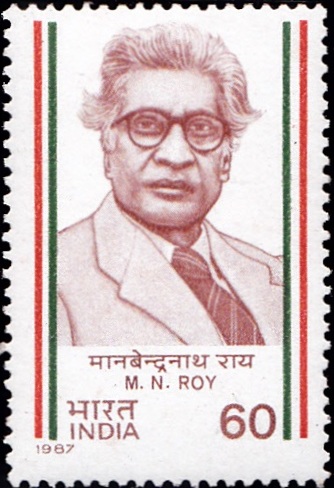
M. N. Roy
A commemorative postage stamp on the Birth Centenary of Manabendra Nath Roy, founder of Mexican Communist Party and the Communist Party of India (CPI) :

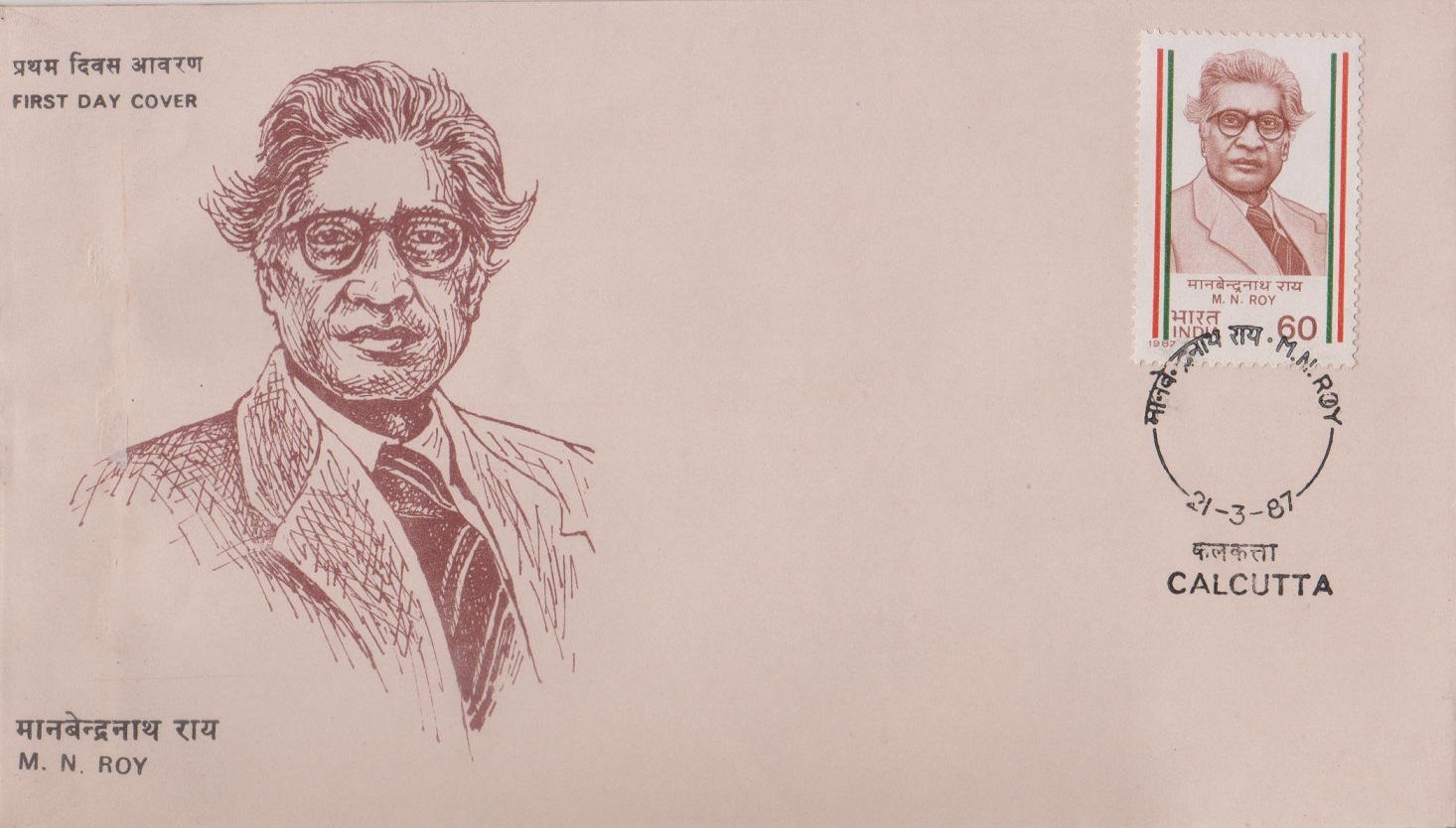 Issued by India
Issued by India
Issued on Mar 21, 1987
Issued for : The Deptt. of Posts is privileged to issue a commemorative stamp on the 100th Birth Anniversary of M.N. Roy in the series ‘Freedom Struggle of India‘.
Description of Designs : The 60p multicolour stamp has been designed by India Security Press, Nasik Road. The cancellation has been prepared by Miss Nenu Bagga. The first cover Shri Kashi Nath Raha.
Type : Stamp, Mint Condition
Colour : Multi colour
Denomination : 60 Paise
Overall size : 4.06 x 2.73 cms.
Printing size : 3.75 x 2.38 cms.
Perforation : 13 x 13
Paper : Indigenous unwatermarked P.G. Matt coated stamp paper
Number Printed : 10,00,000
Number per issue sheet : 40
Printing Process : Photogravure
Printed at : India Security Press
Name : Narendra Nath Bhattacharya
Born on Mar 21, 1887 at Changripota, 24 Parganas, Bengal Presidency, British India
Died on Jan 26, 1954 at Dehradun, Uttarakhand, India
About :
- Born on March 21, 1887, the internationally well-known philosopher-revolutionary Manabendranath Roy joined the revolutionary underground movement for national liberation at the age of 18. From that time till his death on January 25, 1954, his entire life was devoted to the pursuit of freedom, truth and justice.
- His persistent efforts, resulted in an attempted insurrection in 1915 which was crushed by the British. During the next two years, he moved in search of armed assistance for Indian revolution in Indonesia, the Philippines, Japan, Korea, the USA and Mexico.
- In Mexico he absorbed the teachings of Karl Marx and founded the Communist Party of Mexico in 1919; and realized that India‘s struggle for freedom was part of the global struggle of the oppressed and the exploited.
- On Lenin‘s personal invitation, he went to Moscow. His supplementary Theses on the National and Colonial Question were unanimously adopted by the Second Congress of the Communist International (1920) together with Lenin Thesis. He founded the Emigre Communist Party of India in Taskent. His book on India in Transition (1922) established him as a major revolutionary theorist. He was elected to the Presidium, Executive, and Secretariat of the Communist International and became one of its topmost leaders.
- He disagreed with the extremely sectarian line adopted by the Communist International at its Sixth Congress and broke with C.I. He returned to India in 1931, was arrested and sectioned to 12 years of rigorous imprisonment, which was reduced in appeal to 6 years. He devoted his jail years to a careful study of philosophy, and wrote extensively.
- After his release in 1936 he joined the Indian National Congress. He announced a programme of agrarian revolution for India and undertook a campaign alongwith his associates for the radicalisation of the Indian nationalist movement. For India‘s purposeful participation in the anti-fascist war, he launched the political party, ‘The Radical Democratic Party‘, when the war turned in favour of the Allied Powers, he prepared a Draft Constitution of free India (1944) in which a picture of a democracy was presented.He also prepared a People‘s Plan of economic development, (1943) in which primacy was given to employment generation through improvement in agriculture and development of small-scale industry.
- In 1946 he clarified his differences with orthodox Marxism and formulated the basic tenants of Radical Humanism in Twenty-Two Theses. In the same year he founded the Indian Renaissance Institute. He developed a theory of partyless democracy wherein power would be vested in People’s Committees instead of in a political party. The RDP was dissolved and in its place, the Radical Humanist Movement was started. He visualised a new way of revolution “revolution from below” instead of the conventional concept of revolution from above by the capture of State power.
- All his life Roy fought for human freedom and justice in various countries besides India – Indonesia, Mexico, China, Russia and Europe. A true cosmopolitan, he mastered and wrote in several languages – Spanish, German, French, Russian and of course English. His more than hundred titles included India in Transition, Revolution, New Humanism, People Parties Power and Reason Romanticism Revolution. His selected works edited by Sibnarayan Ray in Six Volumes are being published by Oxford University Press.


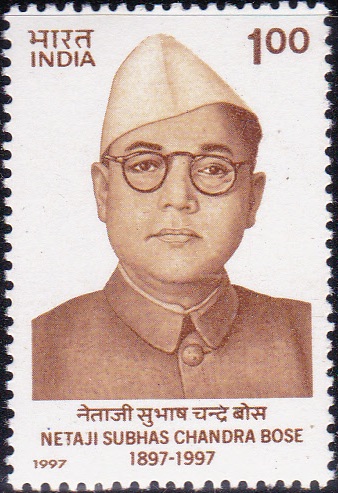
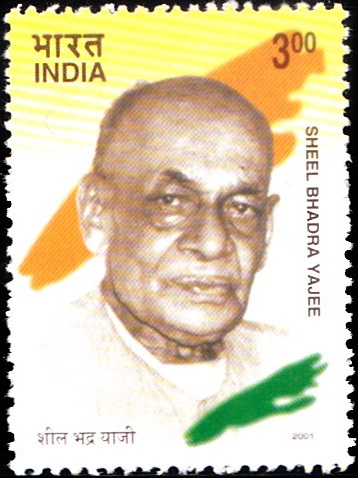
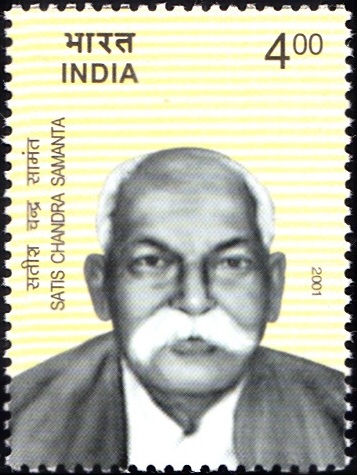
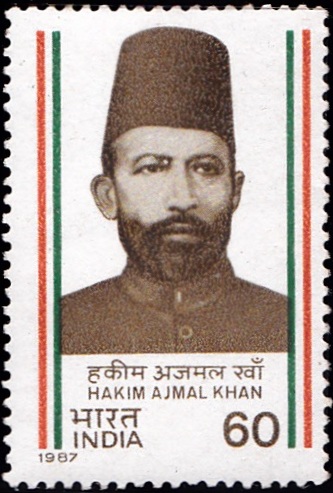
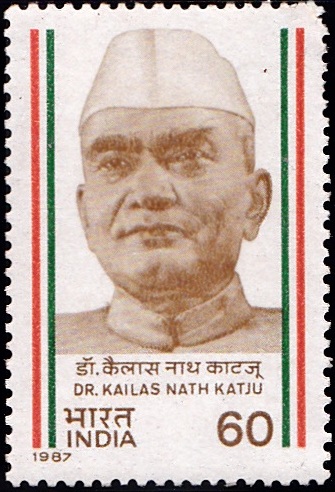
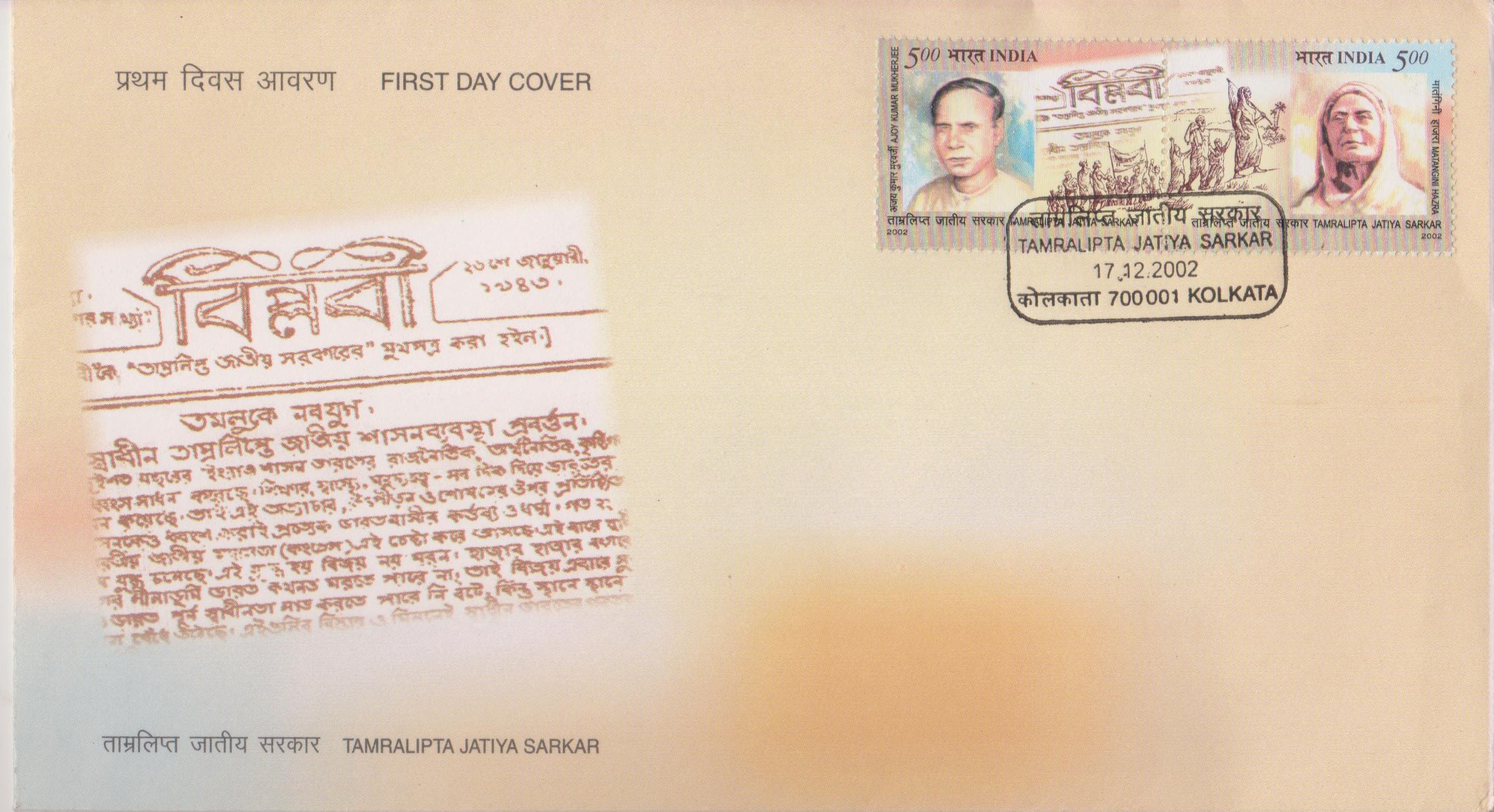
[…] of views on a wide range of issues. During India’s struggle for freedom, Indian leader Shri M. N. Roy found welcome refuge in Mexico, and co-founded Mexico’s Communist Party. A young Satish […]
[…] of views on a wide range of issues. During India’s struggle for freedom, Indian leader Shri M.N. Roy found welcome refuge in Mexico, and co-founded Mexico’s Communist Party. A young Satish […]